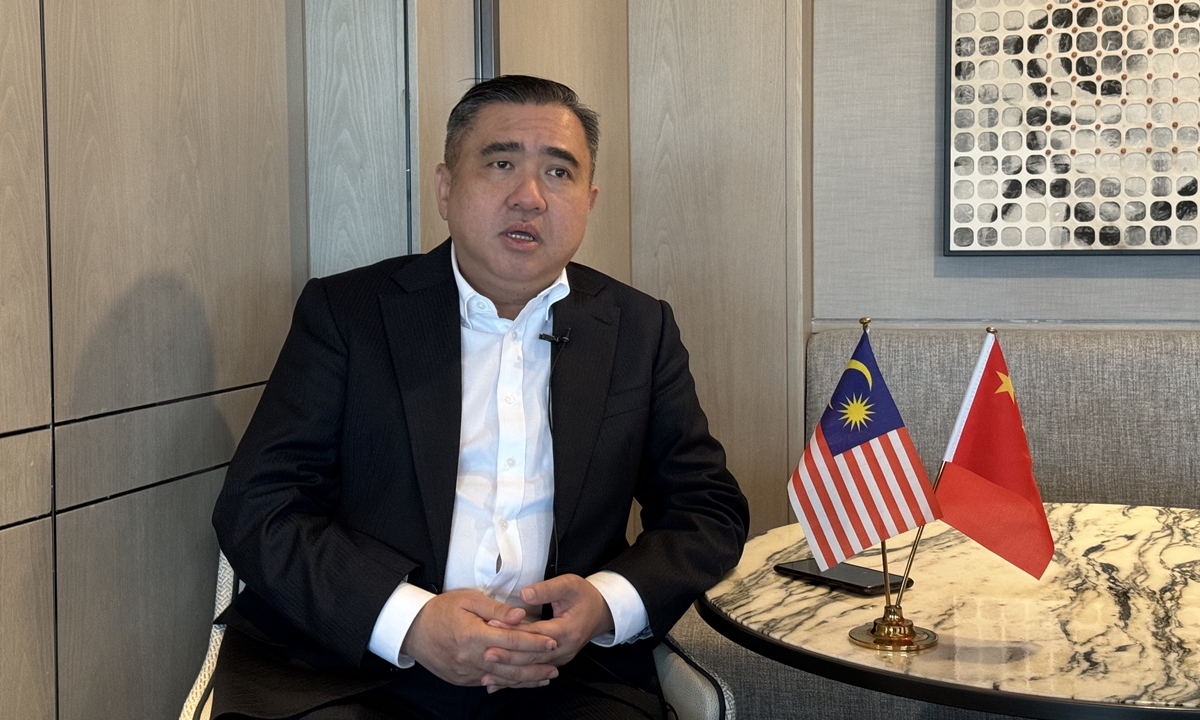
Malaysian Transport Minister Anthony Loke Siew Fook Photo: Chen Qingqing/GT
Malaysia welcomes China's openness and sees the future development of the Belt and Road Initiative (BRI) as very ambitious, showcasing the Chinese leadership on the global stage, which will help more developing countries to further develop their infrastructure and boost their respective economies, Malaysian Transport Minister Anthony Loke Siew Fook, who visited Beijing for the third Belt and Road Forum (BRF) for International Cooperation, told the Global Times in an exclusive interview on Thursday.
On Wednesday at the opening ceremony of the BRF, Chinese President Xi Jinping announced eight major steps China will take to support high-quality Belt and Road cooperation. These steps include building a multidimensional Belt and Road connectivity network, speed up high-quality development of the China-Europe Railway Express, participate in the trans-Caspian international transportation corridor, host the China-Europe Railway Express Cooperation Forum and build a new logistics corridor across the Eurasian continent linked by direct railway and road transportation.
"I think that it's a very bold plan and very clear vision, and is definitely something that we are looking to which provides a kind of model which many countries can adopt," said Loke, who also attended the opening ceremony and relevant discussions on the connectivity.
Some of the areas laid out by President Xi in terms of new energy sustainability and key infrastructure projects are very important criteria for developing countries to further develop their economy and upgrade the living standards of local people, the Malaysian official said.
A flagship BRI project in Malaysia - the East Coast Rail Link (ECRL), is expected to be completed by 2027. There have been a lot of lessons learned over the past decade about how to strengthen cooperation, Loke noted.
"It was started from a complete new concept of cooperation, and I think over the past 10 years, there were many challenges that we have overcome," he said. He added that for this particular project ECRL, Malaysia has gone to many negotiations, even though there were some challenges in the implementation stage, they have all been addressed and solved."
"It shows the openness of both sides to negotiate, to discuss and to find a common ground to overcome any problems," Loke said.
The current construction of the ECRL has reached more than 50 percent, and it needs another two years in terms of completing the project. "But what we are looking at is not just to complete the project but what is the future after the completion of the rail link," Loke said.
What we are looking at is more collaboration with the Chinese side in terms of not only operations of the train services for passengers and cargo, but also to achieve the full potential from the project including more industrialization along the railway link corridor, he noted.
"Therefore, we are looking at more collaboration in terms of trade, investment and of bringing factories into industrial parks along the rail corridor," he said.
The railway, which runs from Malaysia's largest transport hub Port Klang and travels across the peninsula to Kelantan state in northeastern Malaysia, will link the country's less-developed region on the East Coast to the economic heartland on the West Coast
During his visit to China this week, the Malaysian minister has been meeting some of the key stakeholders such as representatives from the China Communications Construction Company (CCCC) involving in the ECRL, and other Chinese companies such as China Railway Rolling Stock Corporation (CRRC) and China Railway Group Limited (CREC).
"They are interested to know what the potential projects to be developed in Malaysia are. The key to many of those questions is what is the direction of the KL[Kuala Lumpur]-Singapore high speed rail, which is something we are looking at," Loke said, noting that Malaysian side would like to further discuss how to implement the project.
The multibillion-dollar high-speed rail project was proposed in 2013, aiming to cover the 350-kilometer distance between Kuala Lumpur and Singapore in under 90 minutes.
Kuala Lumpur-Singapore high-speed rail is definitely a high-profile project which many companies are looking at and at this point, we are still discussing and looking at the various proposals on how best to implement this project, Loke said.
"We are looking at more economic integration between the ASEAN, together with China. Definitely, the infrastructure project is a key factor to that," the Malaysian official said, noting that this will give more opportunities for economic growth in Malaysia as the country is looking at more exchanges and cooperation with the rest of the world, and particularly with China.
While some Western media and observers often distorted the BRI projects as the "debt trap", the Malaysian official said "we definitely do not look at it as a trap."
"We want any infrastructure projects as a catalyst for economic growth and development. And that very much depends on the wisdom of our government and our leaders to fully utilize all these projects to the benefits of our country," Loke said.
"And if our people say that it is a trap, I think this is an insult to the intelligence of our leadership. Because I think that any infrastructure project must be fully utilized," he said.




